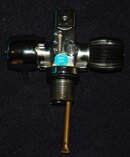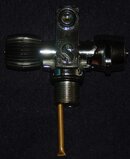There are a few things being missed in this conversation, perhaps I became more aware of the major J-valve problem then most, because I was a child (small lungs and time SAC rate) when I used them: It was easy to breathe right through the reserve. <snip>
Darn rich kids! Nuttin' but K's in our family. Sheesh.
<big grin>
All the best, James





